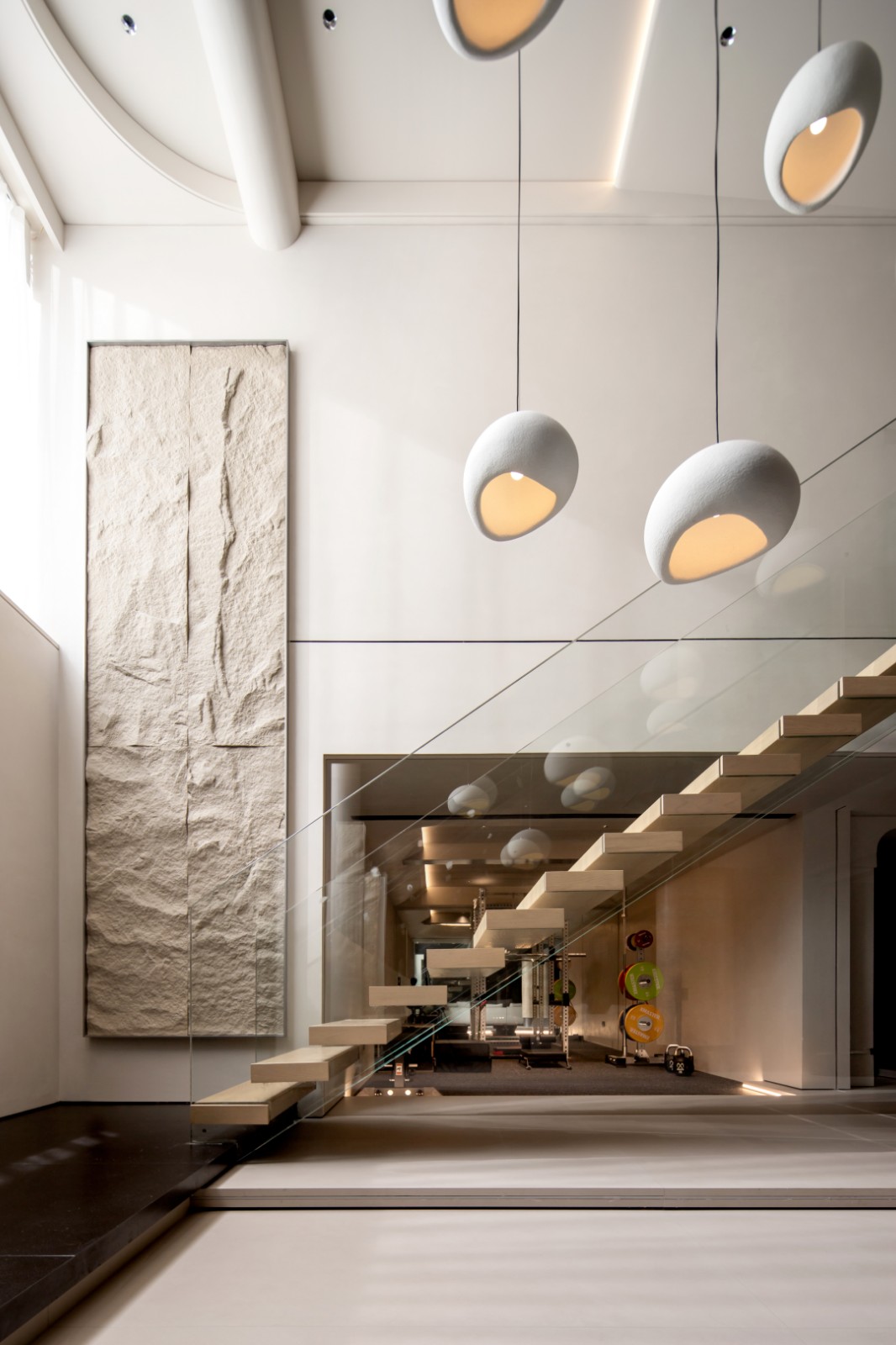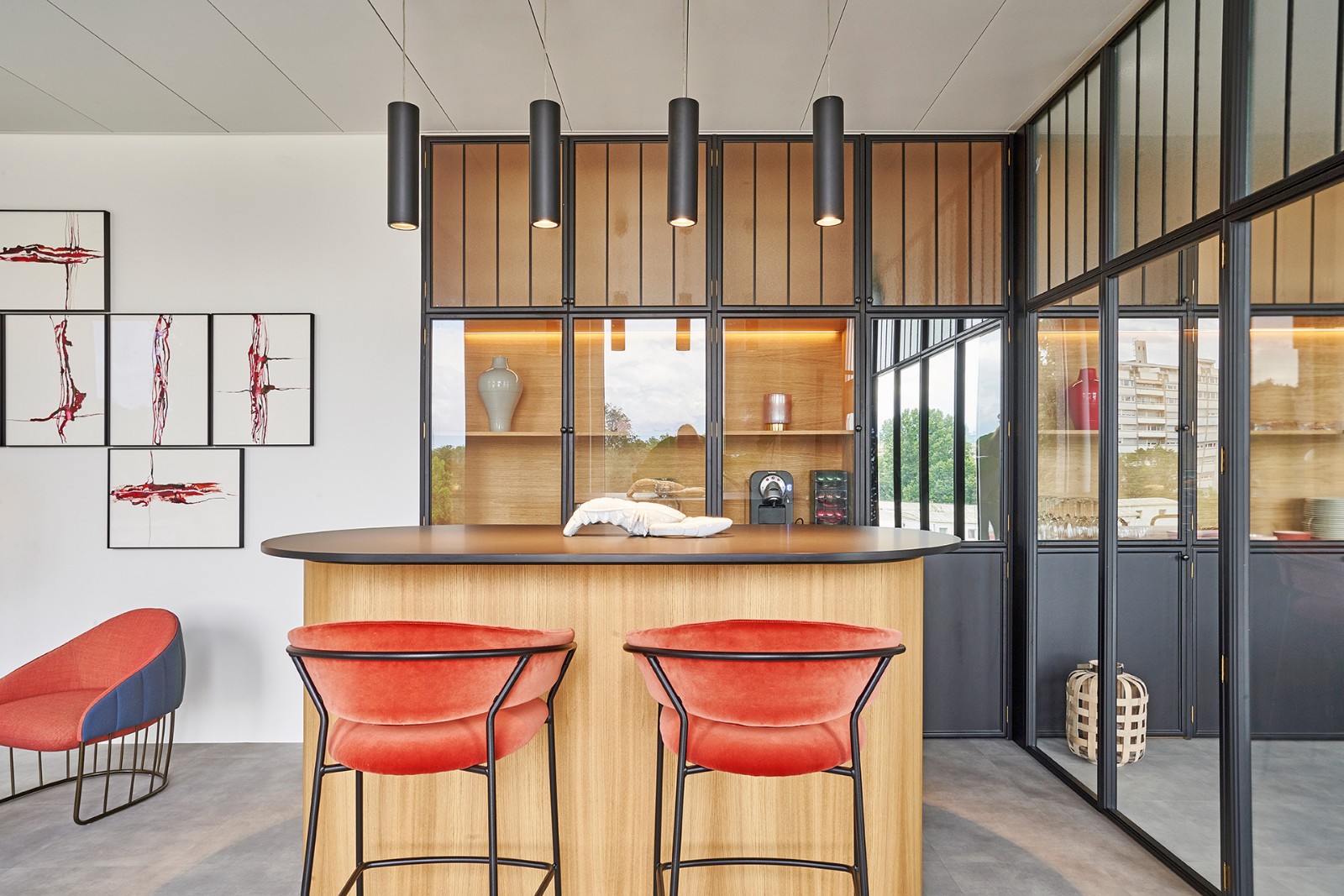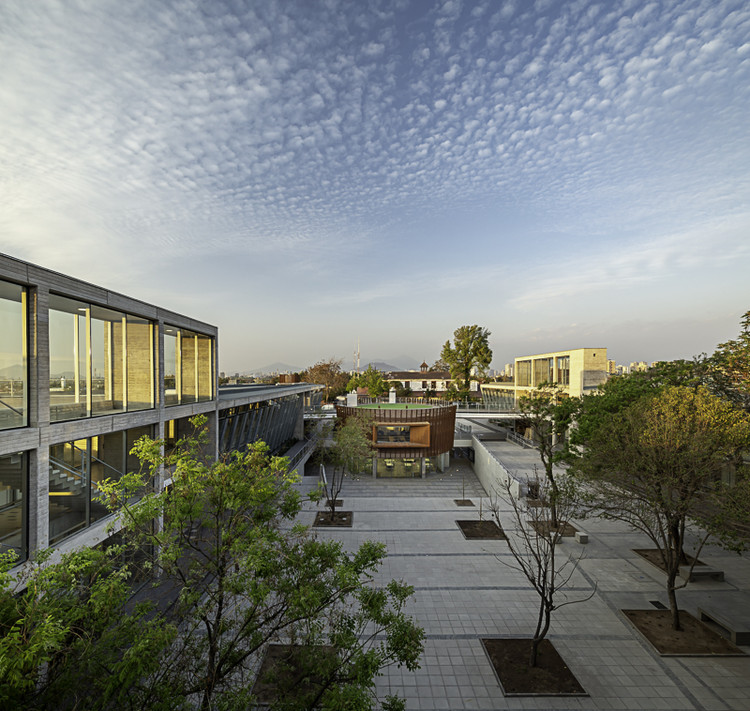Kaleida Health Gates Vascular Institute Cannon Design
2013-03-23 01:00
合作精神是将Kaleida保健和布法罗大学团结在一个单一结构内的动力,该建筑努力将几个学科及其病人、外科医生和研究人员聚集在一起,交流知识并激发创新。476,000 SF设施通过在一个临床血管研究所上堆放一座平移的研究大楼来实现这一点。这座10层楼的“垂直校园”的前四层是盖茨血管研究所(GVI),其中的临床和翻译研究中心(CTRC)占据了大楼的上半部分。夹在两者之间的是一个两级的“协作核心”-“粘合剂”-将不同专业的医生和研究人员联系起来,在各种动态情况下相遇,以加速医学发现-把科学从长凳上移到床边。
The spirit of collaboration was the driving force uniting Kaleida Health and the University at Buffalo within a single structure, and the building strives to bring several disciplines and its patients, surgeons and researchers, together to exchange knowledge and ignite innovation. The 476,000 sf facility achieves this by stacking a translational research building over a clinical vascular institute. The first four floors of this 10-story “vertical campus,” house the Gates Vascular Institute (GVI), with the Clinical and Translational Research Center (CTRC) occupying the top half of the building. Sandwiched between the two, is a two-level “collaborative core”—the “binder” that connects doctors and researchers from varying specialties to meet in a variety of dynamic situations to accelerate medical discoveries—moving science from the bench to the bedside.
© Bjorg Magnea Architectural & Interior
GVI拥有一个由62个私人病房组成的“酒店”-每个病房都可以独立运作,但足够灵活,可以在病人数量起伏不定的情况下与相邻的病人舱一起工作。“酒店”创造了一个与积极治疗区域不同的更加动荡的环境。GVI还设有59个检查室、5个招生办公室。16张重症监护病床、7间手术室,以及众多的病人和家庭设施。这栋建筑的周边设计是为了接纳充足的自然日光。这些建筑反应,再加上一种类似礼宾桌的方式,为病人和家庭提供了积极的第一印象和最后印象,这对患者和家庭的满意度至关重要。
The GVI boasts a “hotel” comprised of 62 private patient rooms arranged into four nursing pods—each capable of independent operation, but flexible enough to work together with adjacent pods over the ebb and flow of patient volume. The “hotel” creates a more restive environment distinct from the active treatment areas. The GVI also features 59 exam rooms, five admissions offices, 16 intensive care beds,seven surgery rooms, and numerous patient and family amenities. The perimeter of the building is designed to admit abundant natural daylight. These architectural responses, combined with an approach akin to a concierge desk, provide the positive first and last impressions so vital to patient and family satisfaction.
© Bjorg Magnea Architectural & Interior
为每年处理60,000人次的病人探访而设计,GVI最先进的急症室设有一间宽敞的主候诊室,可容纳多达90人,并设有直接的电梯通道,可将病人直接垂直运送到程序实验室及手术室。该诊疗室毗邻影像部,采用CT扫描技术,设有53个私家诊疗室,分四个独立舱,两台专用的、最先进的诊断x光机、用于安全处理病人的架空电子文件和为行为健康患者提供候诊室的专用空间。
Designed to handle 60,000 patient visits per year, GVI’s state-of-the-art Emergency Department features a spacious main waiting room, accommodating up to 90 people, with direct elevator access for immediate vertical transport of patients into procedure labs and operating rooms. Located adjacent to the imaging department with CT scan technology, the ED features 53 private patient rooms in four separate pods, two dedicated, state-of-the-art diagnostic x-ray machines, overhead electronic files for safe patient handling and dedicated space with waiting rooms for behavioral health patients.
夹在GVI和CTRC之间的是“协作核心”,包含教育、餐饮和会议设施,由多个高度中庭空间连接。其中包括一个4000 SF企业孵化器-将医生、研究人员和企业家联系在一起、在各种动态情况下会面以加速医学发现的“粘合剂”的一部分-把科学从长凳上移到床边。
Sandwiched between the GVI and the CTRC is the “collaborative core,” containing education, catering and conference facilities, linked by multiple height atrium spaces. Included within the core is a 4,000 sf business incubator—part of the “binder” connecting doctors, researchers and entrepreneurs to meet in a variety of dynamic situations to accelerate medical discoveries—moving science from the bench to the bedside.
© Bjorg Magnea Architectural & Interior
CTRC占据了大楼的上半部分,拥有17万SF的专用实验室空间、先进的成像设施、一个生物储存库和一个临床研究中心、生物医学实验室、生物医学工程专家研究设施、生理学和血管造影,以及用于流行病学和生物统计学的干燥实验室。设计的特点有开放计划的实验室,将研究人员放在一起,而传统上他们会被隔离在单独的实验室中。目的是打破当一个学科的研究人员与另一个学科的研究人员分离时产生的“筒仓”。这个新科学工作场所的设计鼓励了不同研究领域的研究人员之间的思想交流和合作。(鼓掌)
Occupying the top half of the building, the CTRC offers 170,000 sf of dedicated laboratory space, advanced imaging facilities; a bio-repository and a clinical research center, biomedical laboratories, specialist research facilities for biomedical engineering, physiology and angiography, and dry laboratories for epidemiology and biostatistics. Design features such as open-plan laboratories, put researchers side-by-side, when traditionally they would be isolated in individual labs. The goal is to break down the “silos” that result when researchers in one discipline are isolated from researchers in another discipline. This design of the New Scientific Workplace encourages the exchange of ideas and collaboration between researchers in different areas of inquiry.
© Bjorg Magnea Architectural & Interior
 举报
举报
别默默的看了,快登录帮我评论一下吧!:)
注册
登录
更多评论
相关文章
-

描边风设计中,最容易犯的8种问题分析
2018年走过了四分之一,LOGO设计趋势也清晰了LOGO设计
-

描边风设计中,最容易犯的8种问题分析
2018年走过了四分之一,LOGO设计趋势也清晰了LOGO设计
-

描边风设计中,最容易犯的8种问题分析
2018年走过了四分之一,LOGO设计趋势也清晰了LOGO设计









































































